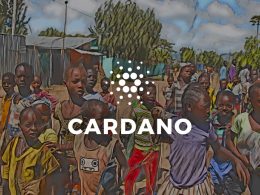Ever since its inception, Cardano has received a lot of attention for its unique approach to scalability, security, and decentralization. With its core mission of enabling economic and social inclusion for all, Cardano has made significant progress in tackling one of the most pressing challenges in the blockchain space – sidechains.
The primary goal of Cardano sidechains is to expand the platform’s capabilities, opening up a multitude of possibilities for developers, businesses, and users across the ecosystem. Sidechains have the potential to unlock new levels of scalability, interoperability, and customization on the Cardano network. This, in turn, paves the way for the development of decentralized applications (dApps) that can operate seamlessly across multiple sidechains, enhancing their performance and usability.
In this article, we’ll explore the fascinating world of Cardano sidechains, their technical design, potential use cases, and their overall impact on the blockchain landscape. We’ll also run you through some of the leading sidechain creators that are bringing scalability, interoperability, and enhanced security to the Cardano blockchain, thus enabling developers and users to leverage its full potential.
What are Cardano Sidechains all about?
Cardano’s robust infrastructure is based on scientific and research-driven development which has propelled its widespread adoption. All developmental and future plans are publicly available for review and analysis by developers and other experts within the ecosystem. This transparent model ensures that Cardano’s infrastructure undergoes rigorous scrutiny and benefits from diverse perspectives before implementing any updates on the network. And in this case, sidechains are one of the outcomes of this research-driven innovation.
But first, let’s look at Cardano’s underlying architecture upon which sidechains are integrated and operate:
At its core, Cardano’s architecture comprises multiple components, including the Cardano Settlement Layer (CSL), the Cardano Computation Layer (CCL), and the Ouroboros consensus protocol. Let’s explore each of these elements in detail:
The Cardano Settlement Layer (CSL) is the primary layer of Cardano’s blockchain architecture. It serves as the foundation for the platform’s transactional and monetary functionalities. CSL is responsible for handling the native cryptocurrency of Cardano, ADA, and ensuring secure and reliable transactions. CSL employs the UTXO (Unspent Transaction Output) model, which means that transaction outputs are used as inputs for subsequent transactions. This model allows for efficient verification of transactions and contributes to the overall scalability and security of the network.
The Cardano Computation Layer (CCL) is designed to support smart contracts and decentralized applications (dApps) on the Cardano platform. It allows developers to create and execute programmable logic and build applications that run on top of the Cardano blockchain. The separation of the computational layer from the settlement layer offers several advantages. It enhances security by isolating the execution of smart contracts from the potential vulnerabilities that might arise from transaction processing. Additionally, this separation allows for more efficient upgrades and modifications to the computation layer without affecting the underlying settlement layer.
Cardano utilizes the Ouroboros consensus protocol to achieve a secure and decentralized network. Ouroboros is a proof-of-stake (PoS) consensus algorithm that ensures the validity and integrity of transactions on the Cardano blockchain. The protocol employs a leader-based system, where a designated slot leader is responsible for creating and proposing new blocks. Through a secure and decentralized selection process, slot leaders are determined based on their stake in the network. This approach promotes fairness, security, and energy efficiency compared to traditional proof-of-work (PoW) protocols.
Now, bridging the foundations of Cardano’s robust architecture to the realm of sidechains:
Cardano’s architecture is designed to support the integration and operation of sidechains within its ecosystem. On 12th January 2023, IOHK made a groundbreaking announcement regarding Cardano sidechains. The team launched sidechains that operate in parallel to the main Cardano blockchain, ushering in a scalable and flexible solution that addresses the limitations of traditional blockchain platforms.

Cardano sidechains are additional blockchains that run parallel to the main Cardano blockchain, also known as the parent or main chain. These sidechains enable specific applications and functionalities to operate independently, while still benefiting from the security and interoperability of the main chain. By offloading certain types of transactions and computational tasks onto separate chains, sidechains offer a promising solution to enhance scalability and accommodate specialized requirements.
From a technical perspective, Cardano sidechains are designed to function independently and in parallel to the main blockchain. They have their own consensus mechanism and governance model, allowing them to operate with a high degree of autonomy. This independence is crucial for achieving scalability, as sidechains can process transactions and execute smart contracts in parallel, alleviating the strain on the main blockchain and significantly improving throughput.
In terms of communication with the main chain, Cardano sidechains provide a way for multiple blockchains to communicate and react to events happening in the other blockchain. Sidechains, however, require on-chain capabilities to run applications that help verify the authenticity of tasks originating from the side chain. So, how are sidechains improving the Cardano ecosystem?
Interoperability:
Interoperability unlocks a new era of cross-industry collaboration, especially with easy transfer of data and value. Additionally, a more decentralized ecosystem is achievable with thousands of (blockchain) application-specific products communicating with each other. You’d also see the rise of many customizable Web3 services supercharging industries like real estates, healthcare, and law among others as important information can be securely sent across public and private networks.
Scalability:
If you think about scalability, one of the primary advantages of Cardano sidechains is their ability to alleviate congestion and enhance scalability. By providing a separate platform for specific use cases, sidechains enable faster transaction processing and improved performance. This scalability boost allows the Cardano network to handle a higher volume of transactions efficiently, ultimately enhancing the user experience and expanding the platform’s capabilities. The main advantage is that sidechains boost the parent chains’ performance without compromising security or decentralization.
Specialized Functionality:
Cardano sidechains open up a world of possibilities for specialized functionalities. Each sidechain can be tailored to cater to specific use cases, allowing for greater customization and flexibility. For instance, a sidechain could focus on high-speed transactions, privacy features, or even experiment with cutting-edge technologies. This modular approach to blockchain development empowers developers and users to leverage the unique advantages offered by sidechains, ensuring that the blockchain ecosystem caters to diverse needs.
Additionally, Cardano sidechains expose an application program interface (API), one similar to the main chain (Cardano’s main blockchain), and leverage its security and efficient consensus protocols. For instance, Cardano Ethereum Virtual Machine (EVM) sidechains avail a Solidity execution environment ( Ethereum’s smart contract language), without requiring miners yet still supporting Ethereum JSON RPC methods (a way to interact with the Ethereum network). As an outcome, Ethereum smart contracts run on side chains at a relatively lower gas fee. You can delve deeper into EVMs design here.
Harnessing Sidechains to Drive Innovation – A Look at Some Top Sidechains Creators
Milkomeda
Milkomeda is a ground-shaking protocol empowered with the vision to bring EVM capabilities to non-EVM blockchains. At its core development, Milkomeda builds on Layer2 solutions (rollups) for the major blockchains, including Cardano, Algorand, and Solana. Currently, Milkomeda has an EVM sidechain on Cardano (Milkomeda C1) and Algorand (Milkomeda A1). According to Milkomeda’s proposal, multiple sidechains are on track and will allow developers to use languages of their choice to write smart contracts. It means developers won’t have to learn functional programming languages like Haskell and Plutus to build on Cardano. They can, however, use a language of their choice, for instance, Solidity. They open doors for interoperability between Cardano, Solana, and other L1 blockchains in their future development. If you’re a developer, here’s how start building on Milkomeda.
At the time of writing, Milkomeda has launched a DApp store, following their proposal being voted on project catalyst’s fund 8. The benefits of Milkomeda’s hard work are evident with the seamless discovery of projects, increased user engagement, and legitimacy in the system as projects built through sidechains can be seen. With over 40 applications on the store, you can interact with innovations in categories like DeFi, Web3 gaming, DAOs, NFTs, utilities, and wallets. Check out the DApp store.
Midnight
Cardano’s Midnight is a data protection-based blockchain protocol. This ecosystem is envisioned to safeguard private and commercial data and preserve key freedoms like association, commerce, and expression for developers, individuals, and companies. Midnight looks forward to empowering developers with the ability to build and deploy first-hand DApps using many programming languages seamlessly – the first will be TypeScript. The idea here is to allow companies to share information without jeopardizing it through leaks and censorship. That’s how we’re moving to an interconnected world where you can share sensitive information
Enabling developers to write smart contracts with a language of their choice empowers developers by simplifying their build processes on Cardano’s network. By blending public and private computational techniques, developers can guarantee the said security and confidentiality in data transfer. Building dApps easily opens a channel for onboarding many users at a faster pace. This, in turn, facilitates more decentralized services like peer-to-peer lending, more social media platforms, and decentralized exchanges. The Cardano community at large benefits through the thrust in growth and adoption realized with Midnight’s revolution that offers an efficient, cost-effective, and secure way to execute smart contracts.
World Mobile
After discovering that nearly half the world is not connected to the globe (because the mobile network will not invest in remote areas as there are not profitable), World Mobile is a blockchain protocol hoping to let everyone share in economic freedom. World Mobile is creating digital IDs for every user globally – letting everyone access digital banking, education, and healthcare. And while you might think that’s the end, any user will access all other value-added services like calls, texts, streaming, content, insurance, micro-loans, etc. You can check out their official docs to learn more about this effort.
A tip of the iceberg of the benefits of the World Mobile Protocol can be seen spanning many countries. The first is Zanzibar, with the establishment of connectivity across the Film Labs. Many talents are being cultivated with online classes, and webinars. As a result, tech enthusiasts and filmmakers are united through a shared passion for the intersection of blockchain technology and creativity. In Pakistan, World Mobile has installed AirNodes to spearhead a fully commercial network to serve everyone in the country, beginning with the unconnected. Next in line is Kenya, Mozambique, and Nigeria which can now access affordable internet seamlessly through World Mobile.
HyperCycle
HyperCycle is a layer2 lightweight-based architecture that enables highspeed, inexpensive, large-scale on-chain execution for microservices. While the project is tactically optimized for artificial intelligence (AI) operations, it has profound implications for domains that need structured and scalable sidechain solutions. Since the Cardano network is an efficient base for the SingularityNET platform, HyperCycle will augment Hydra sidechains. This enables the Cardano blockchain to meet its potential through considerable scalability and accelerated efficiency. HyperCycle decreases cost while increasing the speed of modular AI systems.
Hypercycle is capable of transforming the AI space by allowing you to monetize your computing power if you participate in providing computations that serve AI systems. In the DeFi space, Hypercycle facilitates high-frequency trading, on-chain, at low costs; unlocking endless opportunities through dApps. In media networks offering ratings and rewards, Hypercycle powers cheap and scalable microtransactions. Additionally, Hypercycle promotes public and private chain interoperability through seamless communication between networks.
Looking into the Future
Cardano’s exploration of sidechains represents a significant step forward in the evolution of blockchain technology. By embracing research-driven development and adopting sidechains, Cardano aims to address scalability concerns and provide specialized functionalities within its ecosystem. With the potential to enhance performance, encourage collaboration, and foster innovation, Cardano sidechains open up a world of possibilities for developers and users alike. More interoperability, security, and functionality means developers will deliver more diverse and innovative dApps as the blockchain landscape continues to evolve.
If you’d like to learn more about sidechains, you can check our deep dive into Sidechains, unlocking Cardano’s potential.










